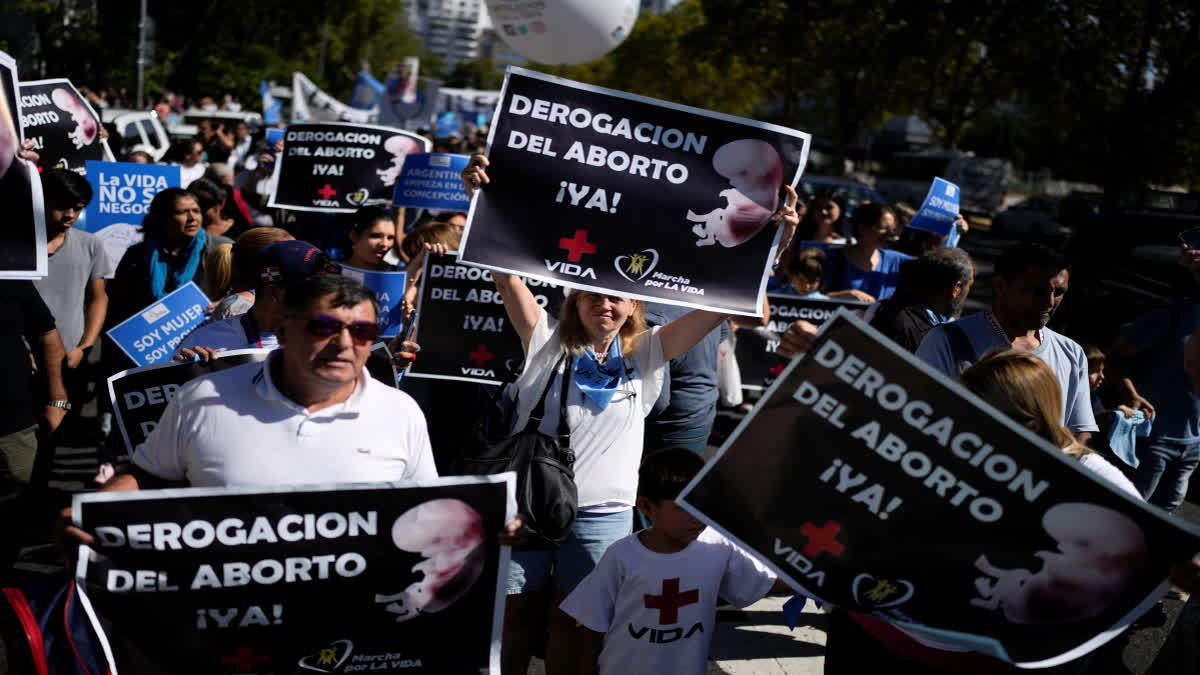Hyderabad: Terminating a pregnancy is a decision fraught with complexity and emotion, driven by various factors such as unintended conception, financial constraints, health considerations, and societal pressures. Regardless of the circumstances, abortion represents a loss, and individuals cope with it in diverse ways.
Each year, on March 25, the world observes the International Day of the Unborn Child, a day dedicated to protesting against abortion and commemorating the lives of aborted fetuses. This day sheds light on the ongoing social debates surrounding abortion and the significance of recognising the sanctity of every human life.
History and Significance: The International Day of the Unborn Child finds its origins in Argentina, established by Pope John Paul II to coincide with the Feast of the Annunciation. Since then, several nations, including El Salvador, Argentina, and Chile, have officially recognised this day as a symbol of opposition to abortion.
It serves as a solemn reminder of the millions of unborn children who have lost their lives to abortion worldwide. By commemorating this day, nations express solidarity in upholding the value and dignity of every human life, advocating for its protection from conception onwards.
Abortion Rates: Global Perspective-The World Health Organization (WHO) estimates that approximately 73 million induced abortions occur worldwide annually. Shockingly, 61 per cent of all unintended pregnancies and 29 per cent of all pregnancies worldwide end in abortion. However, tracking abortion rates across countries proves challenging due to discrepancies in reporting, especially in nations where abortion remains illegal or heavily restricted. The United Nations' World Abortion Policies report provides insights into abortion rates, measuring the number of abortions performed per 1,000 women aged 15 to 44 in various countries.
According to this report, countries like Vietnam, Madagascar, and Guinea Bissau have the highest abortion rates annually per 1,000 women. Conversely, nations like Mexico and Portugal report significantly lower rates, reflecting varying legal frameworks and societal attitudes towards abortion. Despite legal disparities, the global trend in abortion laws has been towards liberalisation, with many countries expanding grounds for abortion access to safeguard women's health and rights.
Abortion Laws: Global Comparisons -Abortion laws vary widely across the globe, with some countries permitting abortion under broad circumstances while others enforce strict bans. Notably, the majority of industrialised nations allow abortion without significant restrictions, while a minority maintain stringent prohibitions. Recent legal developments reflect a shift towards more liberal abortion laws in many countries, driven by efforts to promote women's reproductive autonomy and reduce unsafe abortion practices.
In India, for example, the Medical Termination of Pregnancy (MTP) Act of 1971 decriminalised abortion under specified conditions and established gestational limits for its legality. Over time, amendments to the law have expanded access to abortion services, recognising women's rights to reproductive choice and healthcare. The Supreme Court of India's landmark ruling in 2022 reaffirmed unmarried women's equal right to abortion, further enhancing reproductive rights and access to safe abortion care.
Abortion Rate in India: Current Scenario - India, with an abortion rate of 48.00 per 1,000 women, grapples with the complex intersection of legal, social, and healthcare factors influencing abortion practices. Data from the Ministry of Health and Family Welfare highlights the significant number of abortion cases reported annually, underscoring the importance of accessible and quality reproductive healthcare services. The recent amendment to the MTP Act in 2021 aimed to address gaps in the law and ensure women's right to safe and legal abortion up to 24 weeks of gestation.
